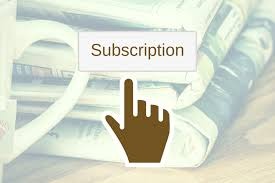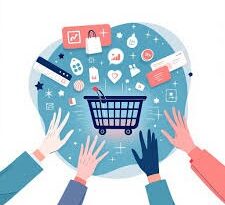The Subscription Economy Is Taking Over: Why Access Is Replacing Ownership
About ten years ago, most of us were still buying CDs, DVDs, and paying once for software. Fast-forward to now, and almost everything—from music to meals—is offered on a subscription basis. This shift didn’t happen overnight. It’s been building over time. But now, the subscription economy is no longer just about streaming or software. It’s everywhere. And it’s reshaping how we spend, how we plan, and how we think about owning things.

Let’s Backtrack: How We Got Here
Subscriptions aren’t exactly new. People subscribed to newspapers and magazines for decades. What changed? Technology. As broadband internet became common and smartphones landed in everyone’s pockets, services like Netflix, Spotify, and Amazon Prime found a sweet spot. They proved that people would rather pay regularly to access a whole library than pay once to own a single item.
That model caught on. Fast. Other industries saw what was happening and realized they could use it too. Now, we’ve got boxes of pet food, razors, and vitamins showing up at our doors every month. People are subscribing to workouts, meditation apps, learning platforms, groceries, even cars.
Why Companies Love It
It’s not hard to see the appeal for businesses. Subscriptions bring in recurring money. It’s easier to plan a future when you know what’s coming in each month. That stability lets companies invest in better products and offer more to their users.
They also get data—lots of it. How often do you open their app? Which feature do you use most? With that knowledge, they tweak and refine, which means more value for the customer and less chance of losing them.
But it’s not just about locking people in. It’s about building relationships. Instead of making one big sale and saying goodbye, companies now focus on keeping you around. And that changes how they operate. Support gets better. Updates happen faster. Services get more personal.
Why People Like It Too
For consumers, it’s about ease and flexibility. Want to try something new? There’s probably a free trial. Don’t like it? Cancel anytime. You’re not stuck with stuff you don’t use. Plus, you get to avoid large one-time costs.
People are also moving away from wanting to own things. Younger generations, in particular, are choosing experiences and access over possessions. It’s easier to stream a movie than to own a stack of Blu-rays. It’s easier to rent clothes for a season than to store them all year.
Subscriptions let you pay for what you use—and leave behind what you don’t.
But It’s Not All Perfect
There’s a downside, of course. Subscription fatigue is real. Most of us are juggling Netflix, Hulu, Spotify, Dropbox, a gym app, maybe a grocery box… and it adds up. Financially and mentally.
Keeping track of all those monthly charges gets messy. Sometimes people don’t even realize what they’re still paying for. And when times get tough financially, these are the first things to go.
For companies, that means a constant push to prove value. If a user doesn’t see the benefit quickly, they’ll cancel. That’s why churn (losing subscribers) is one of the biggest problems in this economy. The focus now isn’t just on getting users in the door—it’s on keeping them there.
Where Technology Comes In
What’s driving this expansion forward is data and automation. Subscription platforms use smart tools to understand habits and customize offerings. That might look like personalized playlists, tailored workout routines, or smart price adjustments.
There’s also bundling. Think Disney+, Hulu, and ESPN+ under one roof. Or Amazon Prime, which offers shopping, music, video, and cloud storage in one membership. These bundles aim to deliver more for your money—and make it harder to quit.
What’s Next?
The future of subscriptions is bigger and more diverse. We’re already seeing subscription models for education, mental health support, car ownership, even financial services. These aren’t fringe ideas anymore—they’re being rolled out and tested right now.
Expect more hybrid models too, where you own a product but pay monthly for service, updates, or extras. Think Peloton or Tesla. Buy the product, then subscribe for added features or performance upgrades.
Regulations are also catching up. Lawmakers in many countries are drafting new rules to protect consumers, especially around transparency, auto-renewals, and cancellation processes.
Wrapping It Up
The subscription economy isn’t slowing down. It’s spreading into nearly every industry, changing how companies make money and how consumers live their daily lives.
It’s built on choice, ease, and connection. But as it grows, it will also need balance. Too many subscriptions can become overwhelming. And too little value means people won’t stick around.
The key going forward? Offer real value. Make things simple. Let people opt out just as easily as they opted in. That’s how this model will stay strong—and how companies and consumers can both win.




